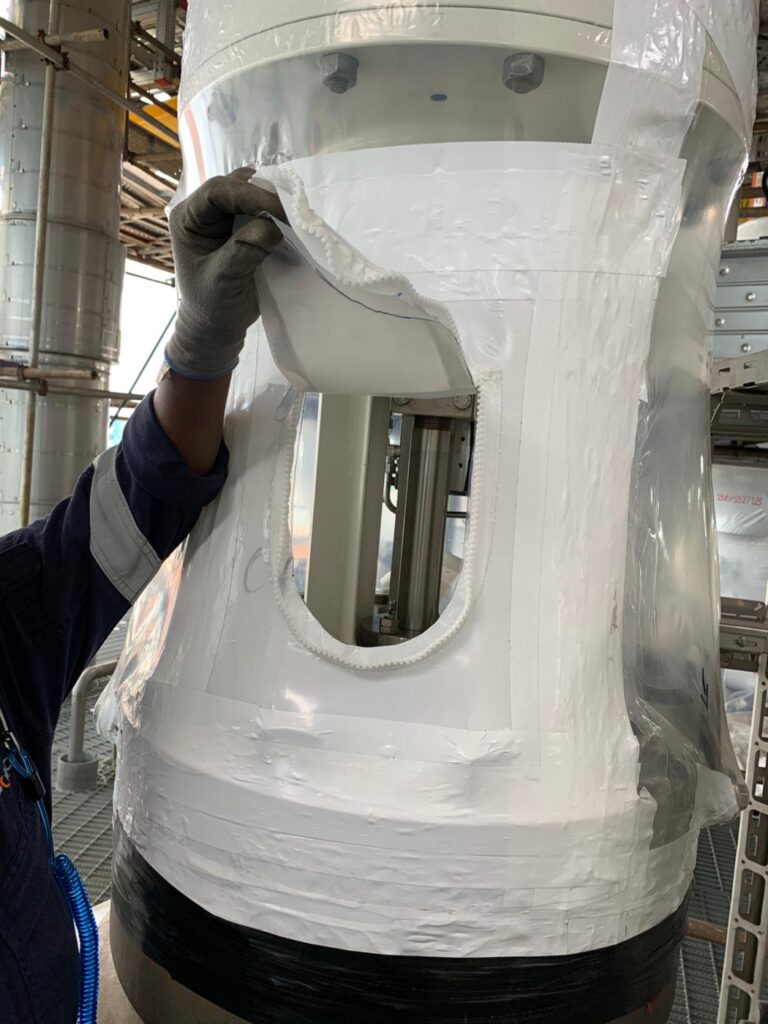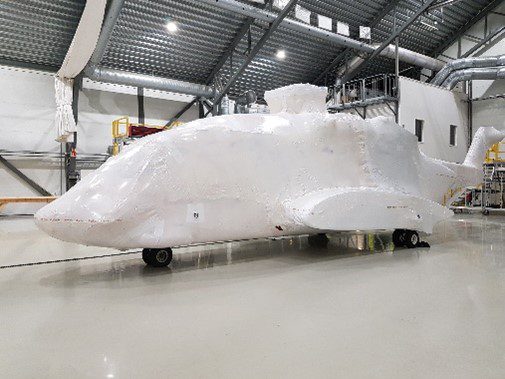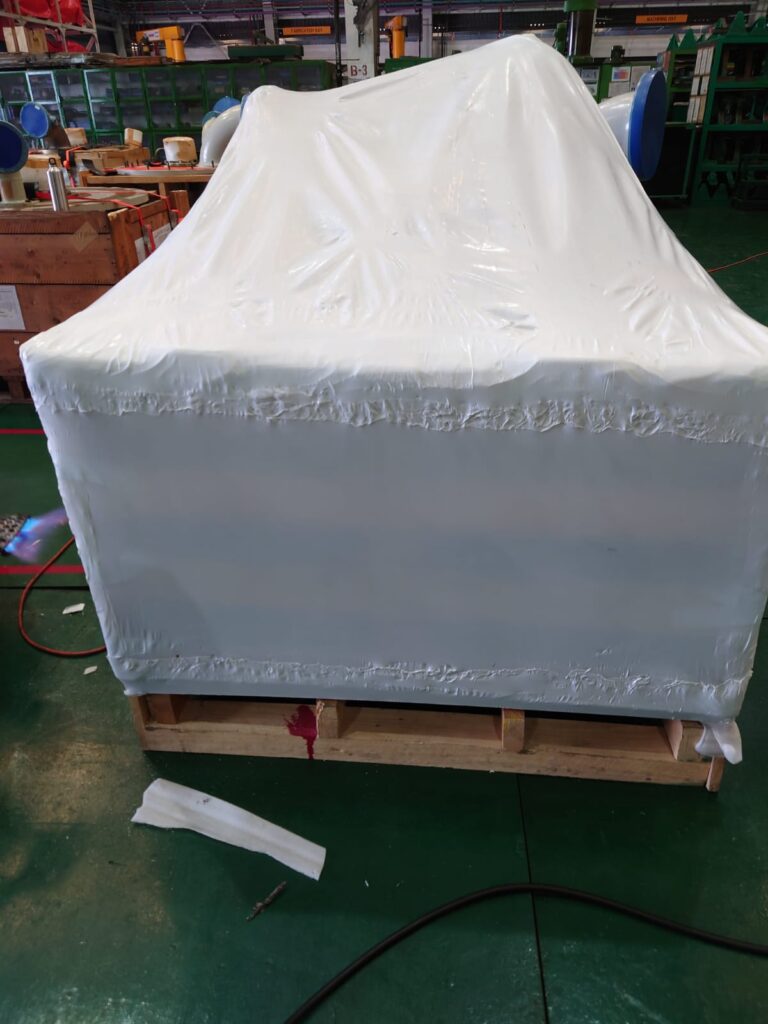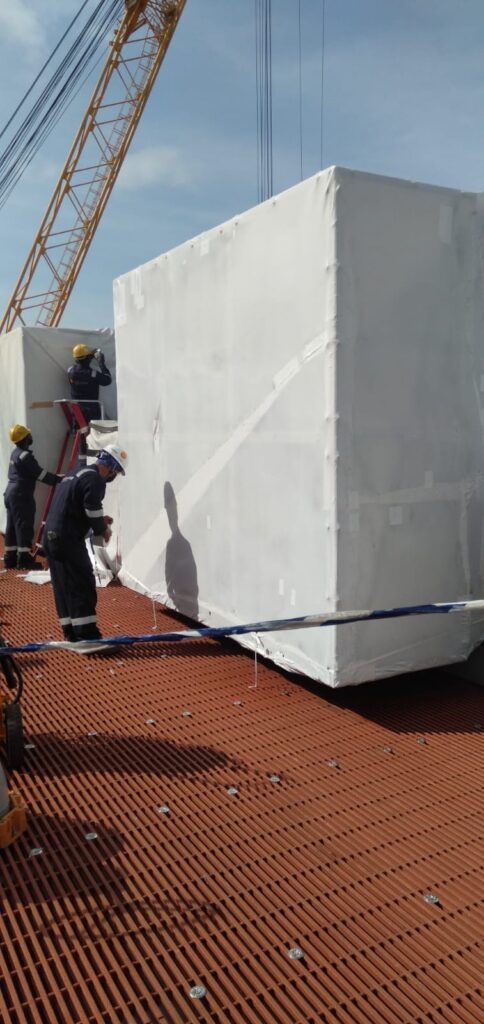In today’s fast-paced world, the oil and gas industry relies heavily on efficient logistics to ensure the smooth transportation of its valuable assets. However, the challenges posed by environmental factors and the need to protect sensitive equipment have highlighted the significance of proper preservation methods. In this article, we will explore three effective preservation techniques: VCI shrink wrapping, UV shrink wrapping, and shock and impact preservation, and their applications in the oil and gas industry.
The oil and gas sector operates in demanding environments, facing extreme temperatures, corrosive conditions, and physical hazards. As a result, preserving the integrity of equipment and materials during storage and transportation is of utmost importance. Effective logistics preservation methods not only safeguard the assets but also contribute to reducing downtime, minimizing maintenance costs, and ensuring operational efficiency.
Oil and gas equipment are exposed to a wide range of environmental factors that can cause damage or deterioration. These include temperature variations, humidity, saltwater, and corrosive substances. Without proper preservation, assets may suffer from rust, corrosion, moisture damage, or even structural failures, leading to significant financial losses for the industry.
To overcome the challenges posed by environmental factors, reliable preservation methods are essential. These methods should provide protection against corrosion, moisture, UV radiation, and physical impacts. Additionally, they should be cost-effective, easy to apply, and compatible with the materials used in the oil and gas industry.
VCI (Vapor Corrosion Inhibitor) shrink wrapping is a preservation technique that combines the benefits of both VCI technology and shrink wrapping. VCI materials release molecules that form a protective layer on metal surfaces, preventing corrosion. This technique involves enclosing the assets in a specialized shrink film that contains VCI additives.
VCI shrink wrapping offers several advantages for the preservation of oil and gas assets. Firstly, it provides excellent corrosion protection by creating a barrier against moisture, oxygen, and other corrosive elements. Secondly, the VCI shrink wrapping offers a tight and secure seal around the assets, preventing any external contaminants from reaching the surface. It is also highly effective in reducing the impact of temperature variations, shielding the equipment from rapid changes that can cause condensation and subsequent damage.
Furthermore, VCI shrink wrapping is easy to apply and remove, making it a convenient preservation method. The film can be customized to fit various shapes and sizes, ensuring a snug fit and maximum coverage. It is also transparent, allowing for easy inspection and identification of the enclosed assets without the need for unwrapping.
The oil and gas industry extensively utilizes VCI shrink wrapping for the preservation of various equipment and materials. Pipes, valves, flanges, and sensitive electronic components can all benefit from this method. During storage or transportation, these assets are vulnerable to corrosion, especially when exposed to the harsh offshore or onshore environments.
By employing VCI shrink wrapping, companies can protect their assets from the corrosive effects of seawater, moisture, and atmospheric contaminants. This not only ensures the integrity of the equipment but also extends its lifespan, reducing the need for costly repairs or replacements.
UV shrink wrapping is another effective preservation method employed in the oil and gas industry. This technique involves using a specialized shrink film that provides protection against harmful ultraviolet (UV) rays from the sun. UV rays can cause fading, degradation, and structural damage to exposed materials over time.
UV shrink wrapping offers several advantages in terms of asset preservation. The shrink film used in this method contains UV stabilizers that act as a barrier against the damaging effects of sunlight. It effectively reduces the risk of color fading, material degradation, and surface cracking, ensuring the assets retain their integrity and aesthetic appeal.
Additionally, UV shrink wrapping provides protection against other environmental factors such as dust, dirt, and moisture. The tight seal formed by the shrink film prevents any contaminants from infiltrating and compromising the assets, especially during long-term storage or transportation.
The oil and gas industry frequently employs UV shrink wrapping to protect assets that are temporarily stored or transported in outdoor environments. This includes equipment like tanks, generators, pumps, and pipelines. These assets are often exposed to extended periods of sunlight, making them susceptible to UV damage.
By implementing UV shrink wrapping, companies can ensure the longevity of their assets and minimize the need for maintenance or premature replacements. This preservation method acts as a shield, effectively mitigating the risks associated with UV exposure and preserving the assets’ functional and aesthetic qualities.
For enhanced protection, the oil and gas industry can employ a combination of UV and VCI shrink wrapping methods. By integrating these two preservation techniques, companies can benefit from the synergistic advantages they offer.
The combination of UV and VCI shrink wrapping provides a comprehensive preservation solution that addresses multiple aspects of asset protection. UV shrink wrapping effectively shields assets from harmful UV rays, reducing material degradation and color fading. Simultaneously, VCI shrink wrapping creates a protective barrier against moisture, oxygen, and corrosive elements, preventing rust and corrosion.
By combining these methods, assets are not only safeguarded from UV damage but also shielded from environmental factors that can lead to corrosion and other forms of deterioration. This dual-layered protection ensures a higher level of asset integrity and extends their lifespan, even in challenging storage or transportation conditions.
Moreover, the combination of UV and VCI shrink wrapping is compatible with a wide range of materials used in the oil and gas industry. It can be applied to various equipment, including pipes, valves, flanges, and sensitive electronic components, providing comprehensive preservation for the diverse assets involved in the industry’s operations.
Implementing this combined preservation approach demonstrates a proactive and holistic approach to asset protection. By leveraging the strengths of UV and VCI shrink wrapping, companies can optimize the preservation process and minimize the risks associated with UV damage and corrosion.
During transportation, oil and gas assets face the risk of being subjected to various shocks and impacts. Vibrations, collisions, and rough handling can lead to damage, structural failures, or operational malfunctions. It is crucial to implement effective shock and impact preservation methods to safeguard the assets and maintain their functionality.
Several methods can be employed to ensure the shock and impact preservation of oil and gas assets. One common approach is the use of cushioning materials such as foam or airbags. These materials absorb shocks and vibrations, protecting the assets from sudden impacts.
Another method involves utilizing specialized crates or containers designed to withstand external forces. These containers are engineered to provide structural support and shock absorption, reducing the risk of damage during transportation.
The oil and gas industry heavily relies on the transportation of equipment and materials to various locations, including remote drilling sites, refineries, and distribution centers. Any damage or malfunctioning of assets during transportation can lead to costly delays, production disruptions, and potential safety hazards.
Implementing effective shock and impact preservation measures is crucial to ensure the safety and integrity of oil and gas assets throughout the transportation process. By employing methods such as cushioning materials or specialized containers, companies can minimize the risks associated with vibrations, collisions, and rough handling.
These preservation methods not only protect the assets from physical damage but also contribute to the overall operational efficiency. By reducing the occurrence of transportation-related incidents, companies can maintain uninterrupted production schedules, meet customer demands, and enhance their reputation for reliability and professionalism.
In the oil and gas industry, logistics preservation plays a vital role in safeguarding valuable assets during storage and transportation. Environmental factors, such as corrosion, UV radiation, and physical impacts, pose significant challenges to asset integrity. By employing effective preservation methods like VCI shrink wrapping, UV shrink wrapping, and shock and impact preservation, companies can mitigate these risks and ensure the longevity and functionality of their assets.
VCI shrink wrapping provides excellent corrosion protection, creating a barrier against moisture and atmospheric contaminants. UV shrink wrapping shields assets from harmful UV rays, reducing material degradation and preserving their aesthetic appeal. Shock and impact preservation methods, such as cushioning materials and specialized containers, safeguard assets from transportation-related damages.
By investing in proper logistics preservation, the oil and gas industry can minimize downtime, reduce maintenance costs, and enhance operational efficiency. Protecting assets throughout the supply chain not only preserves their value but also contributes to the industry’s overall success and sustainability.
1. What is the purpose of logistics preservation in the oil and gas industry?
Logistics preservation aims to protect oil and gas assets during storage and transportation, ensuring their integrity, functionality, and longevity. It minimizes the risks of corrosion, UV damage, and physical impacts, reducing downtime and maintenance costs.
2. How does VCI shrink wrapping protect oil and gas assets?
VCI shrink wrapping creates a protective layer on metal surfaces, preventing corrosion. It acts as a barrier against moisture, oxygen, and other corrosive elements, preserving the assets’ condition and extending their lifespan.
3. Can UV shrink wrapping be used for long-term preservation?
Yes, UV shrink wrapping is suitable for long-term preservation. The specialized shrink film used in this method contains UV stabilizers that protect assets from harmful UV rays. It reduces color fading, material degradation, and surface cracking over an extended period.
4. What are the common methods for shock and impact preservation?
Common methods for shock and impact preservation include using cushioning materials like foam or airbags to absorb shocks and vibrations. Specialized crates or containers designed to withstand external forces also provide structural support and shock absorption.
5. Why is shock and impact preservation crucial for the transportation of oil and gas?
Shock and impact preservation ensure the safety and integrity of oil and gas assets during transportation. By minimizing the risks of physical damage and malfunctions caused by vibrations, collisions, or rough handling, it helps companies maintain production schedules, avoid costly delays, and enhance overall operational efficiency.




